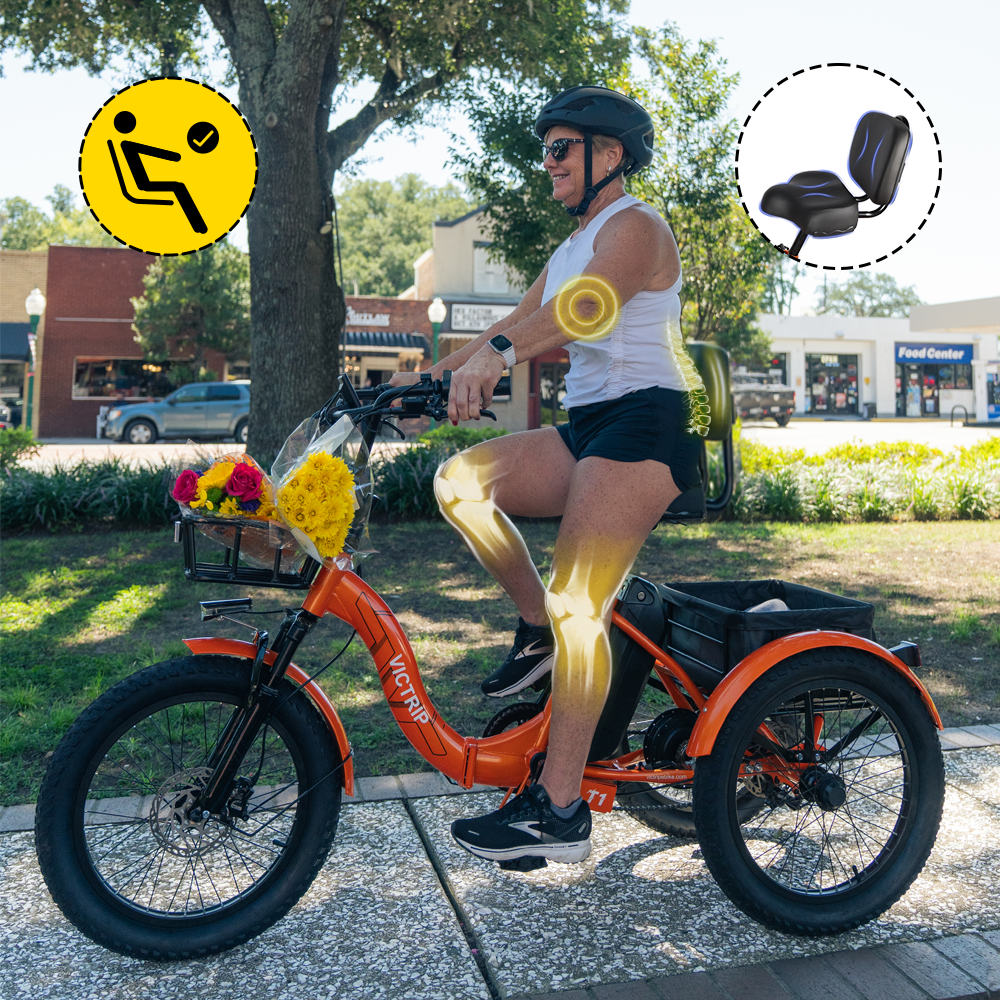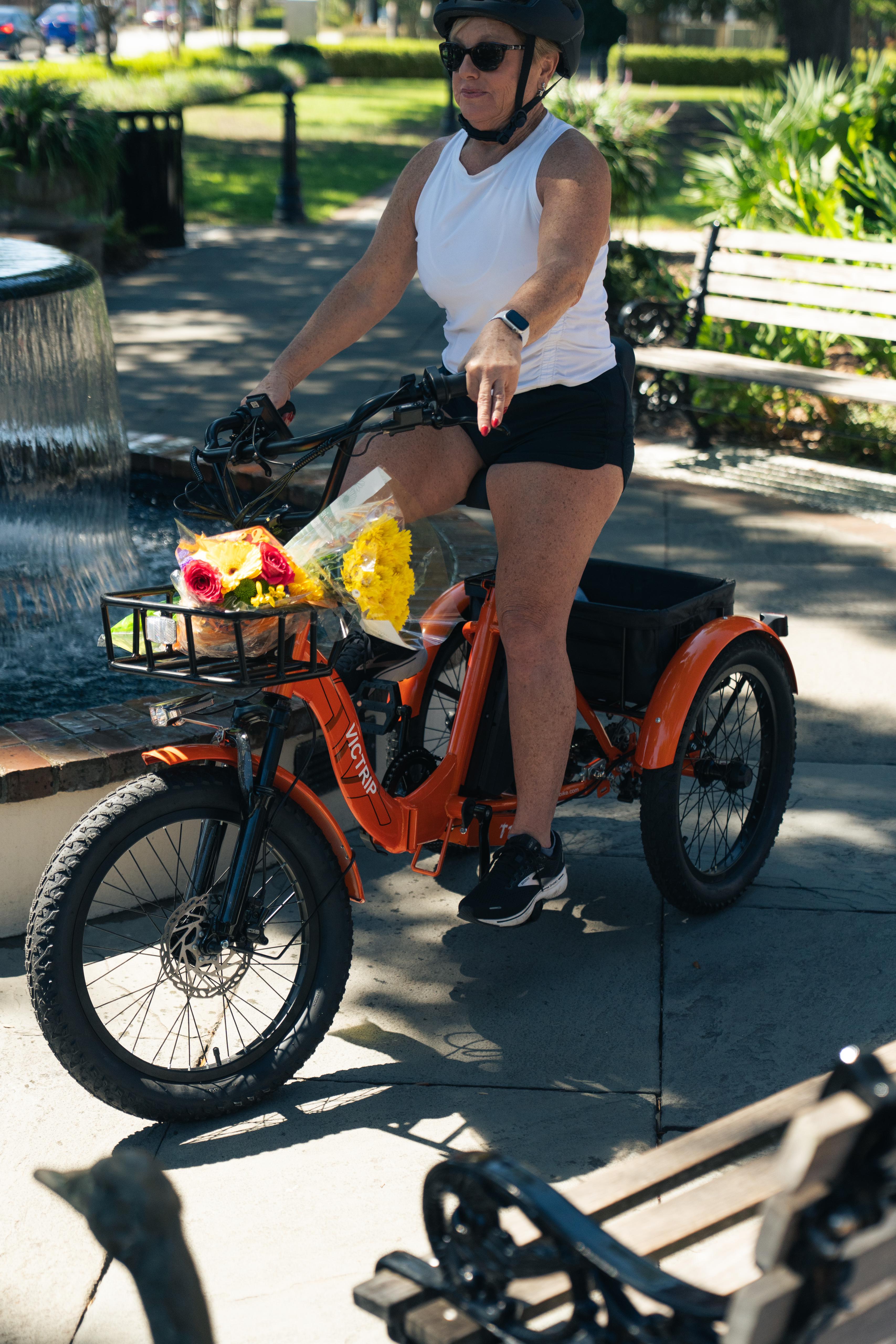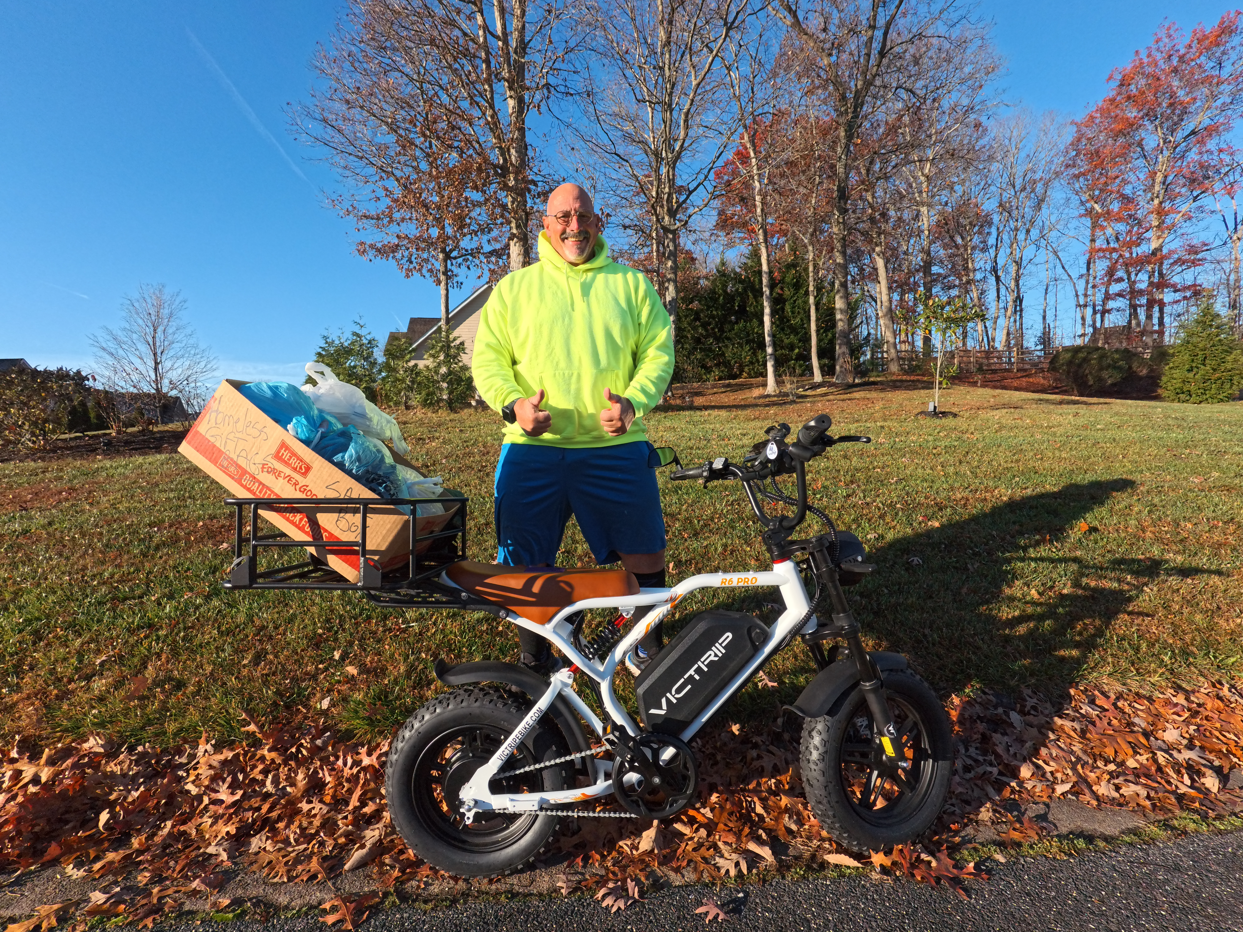
Before you dig into maintenance, it helps to know what you’re working with. At the core of every e-bike are four systems that interact constantly: the battery pack, the motor, the controller (electrical brain), and the human interface (display, throttle, or pedal-assist sensor).
Key components: battery, motor, controller, display
-
Battery: The most expensive replaceable part. Lithium-ion chemistry is standard; capacity is measured in watt-hours (Wh).
-
Motor: Hub or mid-drive — each has different maintenance profiles. Mid-drives put load on the drivetrain; hub motors tend to be lower maintenance but harder to repair at home.
-
Controller: Manages power flow and safety cutoffs. Often embedded in the bike or the battery.
-
Display & Sensors: Provide readouts and manage pedal assist. Keep connectors dry and firmware updated.
How these parts interact
The battery supplies electricity to the controller, which adjusts power to the motor based on input from sensors and the rider. Mechanical wear (worn chain, underinflated tires) increases power draw and reduces range and battery life. So mechanical and electrical maintenance are deeply linked.
Charging Your Electric Bike: Best Practices
The phrase Electric Bike Care and Charging Tips should be front and center of any routine — good charging habits directly influence battery lifespan and safety.
Recommended charging routines
-
Charge after medium-length rides rather than always running to zero. Frequent shallow discharges and partial recharges are better than full deep cycles.
-
Aim to keep daily SoC (state-of-charge) between about 20% and 80% for everyday use whenever practical. A full charge is fine before long trips.
-
Use the original or manufacturer-recommended charger. Third-party chargers can work but must match voltage/current specs exactly.
Charger types and certifications
-
Prefer chargers with over-voltage, short-circuit, and thermal protection. Look for CE, UL, or relevant regional certifications.
-
Don’t modify connectors or bypass fuses. If the charger or port gets hot, stop using it and get it checked.
Battery Maintenance for Longevity
Batteries degrade with time and use, but you can slow that decline.
Optimal SoC and depth-of-discharge
-
For regular use, keep the battery between ~20–80% SoC. This reduces stress and prolongs cycle life.
-
Avoid leaving the battery at 100% for extended periods and don’t store it fully discharged.
Storage guidelines and calendar checks
-
Store batteries at cool, dry locations away from direct sunlight. Ideal storage temperature is about 15°C–20°C (59°F–68°F).
-
If you won’t ride for more than a month, store the battery at ~40–60% charge and check every 6–8 weeks. Top up if it falls below ~30%.
Charging Safety and Fire Prevention
Lithium batteries are safe when handled correctly — but safety matters.
Temperature concerns and placement
-
Charge in a well-ventilated area away from flammable materials. Avoid charging on beds, sofas, or near curtains.
-
Don’t charge below 0°C (32°F) — low temps can cause plating and harm the cells. Charge between about 5°C and 45°C (41°F–113°F) where possible.
Fire-safe habits
-
Keep a working smoke detector nearby if you charge in an indoor space. Have a basic class ABC or BC fire extinguisher rated for electrical fires accessible.
-
Inspect the battery for swelling, leakage, or unusual odors. Stop using and safely dispose of suspect batteries through local battery-recycling programs.
Tire Care and Replacement
Tires are the interface with the road — maintain them well for range, handling, and comfort.
Pressure, wear indicators, and puncture prevention
-
Check tire pressure before every ride. E-bike tires often require higher pressure than regular bike tires — follow manufacturer recommendations printed on the sidewall.
-
Look for cracks, bulges, or worn tread. Replace tires with exposed cords or significant uneven wear.
Choosing e-bike-rated tires
-
E-bike tires are designed to handle higher torque and weight. When replacing, pick tires rated for your wheel size and e-bike loads. Consider puncture-resistant liners or sealant for frequent urban rides.
Read More: Fat Tire E-Bikes Vs. Thin-Tire E-Bikes: Choosing the Right Ride.
Brakes, Cables, and Suspension
Your stopping system is non-negotiable for safety.
Inspecting and replacing brake pads and lines
-
Check brake pads monthly; replace when less than 1–2 mm pad material remains.
-
For hydraulic brakes, bleed the system when braking feels spongy or after a year of use; for mechanical disc brakes, adjust cable tension and lubricate pivot points.
Suspension tune-ups and seals
-
Clean and lightly lubricate fork stanchions. If seals leak or suspension performance degrades, service it per manufacturer intervals.
Cleaning and Routine Inspection
Keeping the bike clean helps you spot issues early and prevents corrosion.
Safe cleaning steps and products to avoid
-
Use a soft brush and mild soap with low-pressure water. Avoid direct high-pressure washers near bearings, motor seals, and electrical connectors.
-
Don’t spray electrical connectors directly; use isopropyl alcohol wipes or contact cleaner on exposed connectors if needed.
Quick pre-ride checklist
-
Tire pressure, brakes test, quick chain check, battery charge, lights functional, and no unusual noises. This 60-second routine prevents many ride-day surprises.
Electrical Troubleshooting
Electrical issues often show as reduced power, error codes, or no display.
Reading error codes and resets
-
Many e-bikes show codes on the display. Keep your manual (or a downloaded PDF) handy to map codes. A soft reset—power off, remove battery if possible, wait 30 seconds, then power on—often clears transient issues.
-
Check connectors for corrosion or looseness. Re-seat all plug-in connections.
Motor hums but won’t engage
-
That can indicate a sensor fault (torque or cadence sensor), connector problem, or controller issue. Inspect wiring to the motor and sensor; if intact, consult a technician.
Software, Firmware, and Diagnostics
Modern Folding e-bikes may have firmware that affects performance and safety.
When to update and backup settings
-
Update firmware only when advised by the manufacturer and ensure battery has sufficient charge before updating. Document or photograph settings so you can restore preferences afterward.
-
If you’re unsure, let an authorized dealer handle firmware updates.
Dealer vs DIY for firmware
-
Firmware changes can change motor output and safety parameters. Dealers can ensure compatibility and keep warranty intact.
Storage and Seasonal Care
Treat long-term storage as a mini-maintenance cycle.
Winterizing and long-term storage
-
Remove the battery and store it separately at ~40–60% SoC in a cool, dry place. Keep the bike off the ground if possible to protect tires and suspension.
-
Lubricate drivetrain lightly and protect exposed metal parts with a corrosion inhibitor.

Preventing corrosion and seal care
-
Salt air (coastal climates) and winter road salts accelerate corrosion. Rinse and dry components after salty rides and inspect bolts and fasteners regularly.
Upgrades, Accessories and Safety Gear
Enhance safety and convenience with smart add-ons.
Useful accessories
-
High-quality lights, frame or pannier racks, reflective tape, and an integrated lock can make everyday rides safer. Choose accessories rated for e-bike loads (e.g., racks with higher load ratings).
Protective gear and legal considerations
-
Always wear a certified helmet. Check local laws about lights, bell/horn, and speed-limiting requirements. Use reflective clothing for night rides.
Troubleshooting Common Mechanical Issues
Many mechanical issues are straightforward to diagnose.
Chain and drivetrain care
-
Keep the chain clean and properly lubricated. E-bike torque can accelerate wear; check chain stretch and cassette teeth for wear. Replace chain before it damages the cassette.
Addressing unusual vibrations
-
Vibration can come from loose bolts, warped rotors, or unbalanced tires. Tighten fasteners to torque spec and check rotor trueness.
Regular Service Intervals and What to Expect
A predictable service schedule keeps surprises away.
Annual service checklist
-
Inspect battery health and capacity, check motor and controller, bleed hydraulic brakes, replace worn drivetrain components, and check wheel bearings.
When to consult a certified technician
-
Battery swelling, persistent electrical faults, motor noise or grinding, and major firmware problems require professional attention.
Environmental and Usage Factors That Affect Performance
Where and how you ride affects maintenance.
Heat, humidity, salt air, and elevation
-
High heat accelerates battery degradation; frequent rides in very hot climates demand closer attention to battery SoC and storage. High humidity and salt can corrode electronics and fasteners.
Carrying cargo and payload considerations
-
Overloading decreases range and stresses components. Respect manufacturer payload limits and use reinforced racks when carrying heavy cargo.
Conclusion
Good Electric Bike Care and Charging Tips aren’t complicated — they’re consistent. By adopting the routine practices covered here (reasonable charging habits, safe storage, regular mechanical inspections, and timely professional servicing), you’ll get better reliability, longer battery life, and safer rides. Remember: a little preventive care now saves time, money, and hassle later.
FAQs
How often should I charge my e-bike battery?
For frequent riders, charge after medium-length rides and avoid deep discharge as a habit. If you ride daily, a nightly top-up (not always to 100%) is fine. For occasional riders, store at ~40–60% and check charge every 4–8 weeks.
Is it bad to leave my battery plugged in overnight?
Modern chargers and batteries include protections and many manufacturers allow overnight charging. However, for maximum long-term battery health, avoid too-frequent long overnight charges, and unplug once fully charged if possible.
My battery is swollen — what should I do?
Stop using it immediately. Don’t puncture or charge it. Handle carefully and take it to an authorized recycling or disposal center that accepts lithium-ion batteries. Don’t throw it in regular trash.
Can I use a third-party charger?
Only if it matches the exact voltage and current specs and has proper safety certifications. When in doubt, use the manufacturer-supplied charger to maintain warranty and safety.
How do I know when to replace my battery?
Typical signs are significant range loss (e.g., below ~70% of original range), increased charge time, and irregular voltage behavior. Battery capacity also naturally declines over cycles — many packs last between 500–1,000 full equivalent cycles.
Why does my range drop suddenly in cold weather?
Cold temperatures temporarily reduce lithium-ion battery efficiency. Range often recovers when temperatures rise. Keep the battery warm before riding and store indoors overnight.




Share:
Waterproof Electric Bikes for Mountain Adventures
Best Moped Style E Bike Brands in 2025